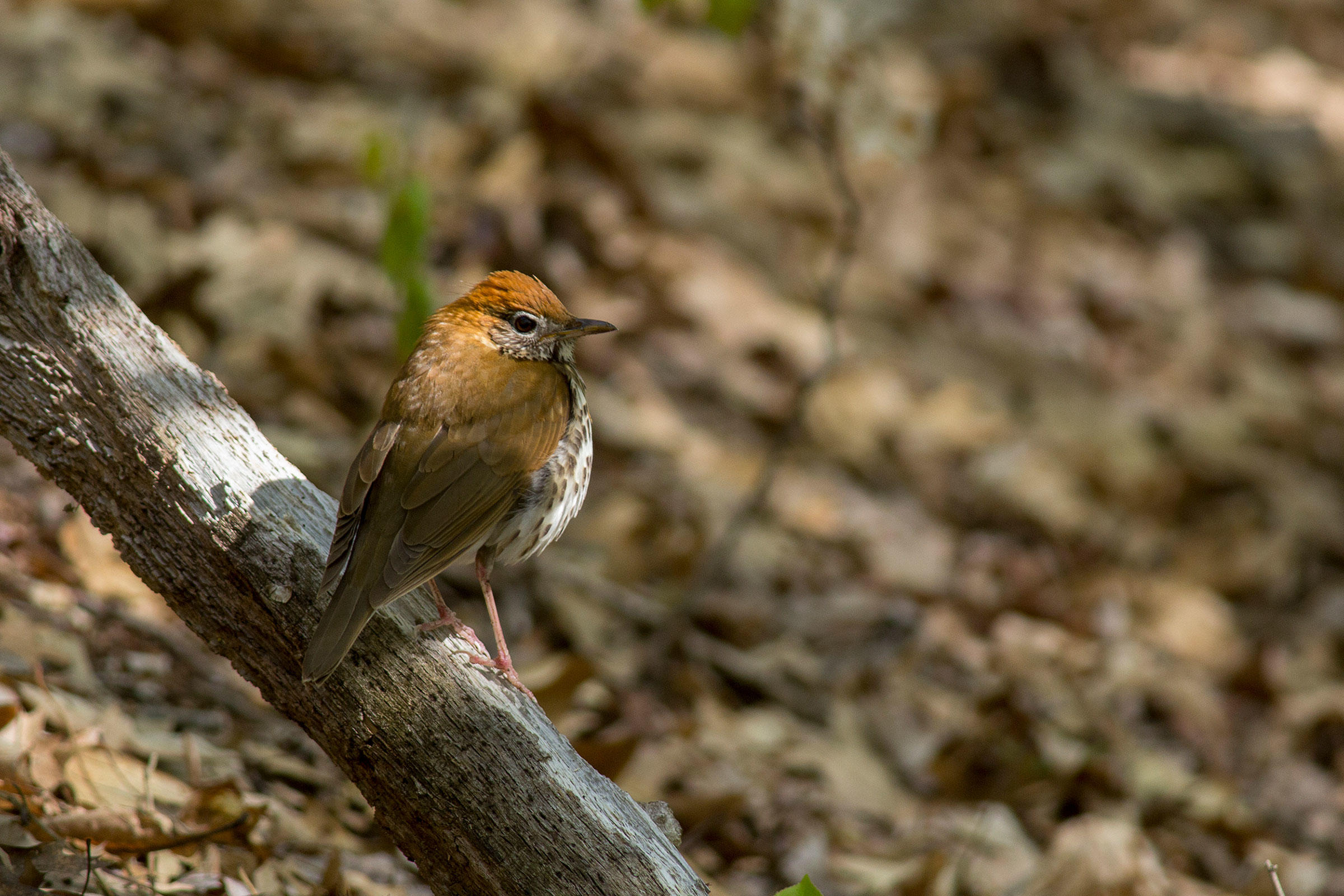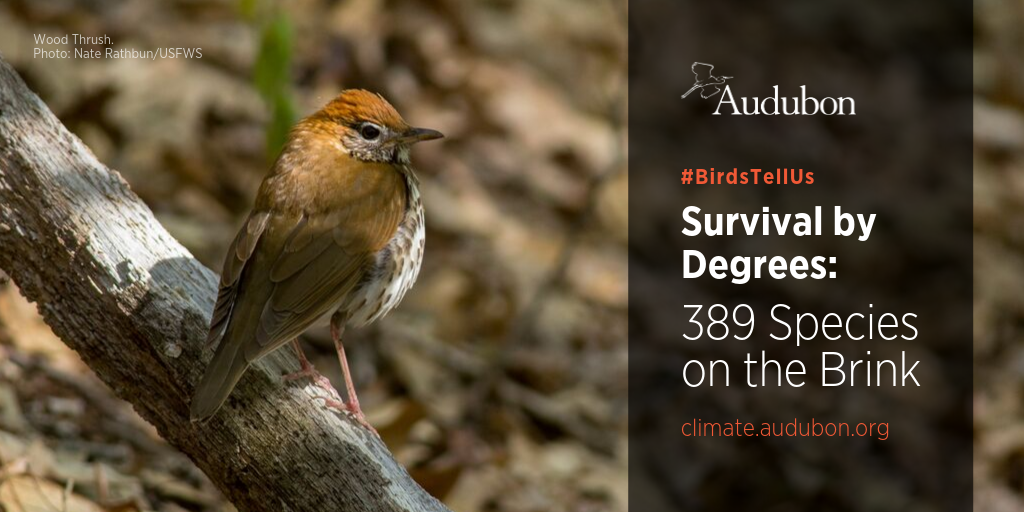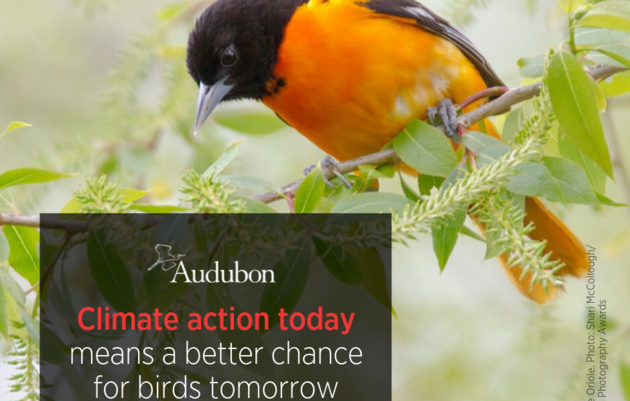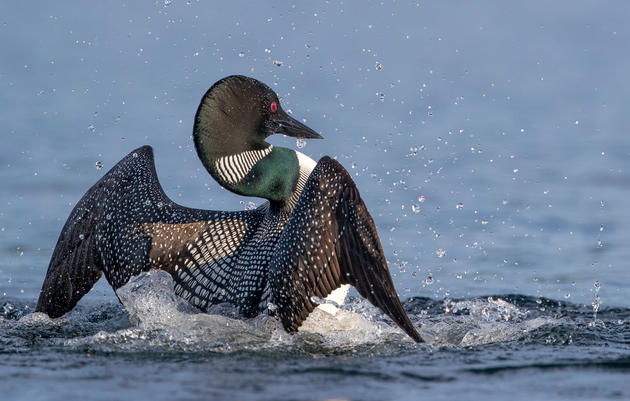Enter your zip code into Audubon’s Birds and Climate Visualizer. It will show you how climate change will impact your birds and your community and includes ways you can help.
HUNTINGTON, VT (October 10, 2019) – Today, the National Audubon Society and its state office, Audubon Vermont, announced a groundbreaking climate report, Survival by Degrees: 389 Bird Species on the Brink. “Two-thirds of America’s birds are threatened with extinction from climate change, but keeping global temperatures down will help up to 76 percent of them. There’s hope in this report, but first, it’ll break your heart if you care about birds and what they tell us about the ecosystems we share with them. It’s a bird emergency,” said David Yarnold, (@david_yarnold), CEO and president of Audubon.
“Last month, we watched as young people around the globe, and right here in Vermont, rose in protest to demand stronger action to address the climate crisis -- Audubon’s new climate report supports the urgency of our youth’s call to action,” said David Mears, executive director of Audubon Vermont. “As dire as this moment may seem, I find hope in both of these events: we need our youth to inspire and lead as we respond to the unprecedented challenge of global climate disruption; and we need a strong foundation of science to guide our actions.”
Audubon scientists examined climate-related impacts on birds across the continental United States. Using advanced research methods and expanded data sets, the scientists reveal that two-thirds of bird species in North America are at-risk of extinction as a result of the climate crisis unless immediate action is taken to curb additional warming.
“Birds are important indicator species, because if an ecosystem is broken for birds, it is or soon will be for people too,” said Brooke Bateman, Ph.D., the senior climate scientist for the National Audubon Society. “When I was a child, my grandmother introduced me to the Common Loons that lived on the lake at my grandparent’s home in northern Wisconsin. Those loons are what drive my work today and I can’t imagine them leaving the U.S. entirely in summer but that’s what we’re facing if trends continue.”
In Vermont, many of our favorite bird species are vulnerable a result of the climate crisis including the Common Loon, the White-throated Sparrow, and the Hermit Thrush, Vermont’s state bird. The changing climate will negatively impact migratory routes, breeding grounds, and food availability for most of Vermont’s birds. Another major risk to birds due to the climate crisis are extreme weather events associated with a warming planet, such as the major flood events now increasingly common. These impacts of the climate crisis are in addition to other ongoing threats to birds such as sprawl development and the spread of invasive species, which results in the loss of important bird habitat.
According to Rae Bronenkant, Audubon Vermont’s newly-minted youth leadership coordinator, “Our own future and the future for Vermont’s birds depends upon the leaders of tomorrow.” She continues, “We must empower today’s youth with the resources and support necessary to spearhead solutions to the climate crisis.” Audubon Vermont’s new Youth Conservation Leadership Program was established to foster the next generation of advocates, scientists, and educators as they become leaders within the Audubon network and beyond. We are working with the newly established University of Vermont Audubon Campus Chapter, the first of its kind in the state, and offering shared educational programs with the Vermont Youth Conservation Corps. Audubon Vermont is building a diverse coalition of community partners dedicated to equipping our youth with the knowledge and skills to drive the transformational change we need to fight climate change.
“We already know what we need to do to reduce global warming, and we already have a lot of the tools we need to take those steps. Now, what we need are more people committed to making sure those solutions are put into practice,” said Renee Stone, vice president of climate for the National Audubon Society. “Our elected officials at every level of government must hear from their constituents that this is a priority. Audubon is committed to protecting the places birds need now and in the future and taking action to address the root causes of climate change.”
Audubon Vermont has outlined the following steps that Vermonters can take to address climate change:
- Reduce the amount of carbon pollution released into the atmosphere. In order to drive down carbon emissions, we will need innovative systemic changes through solutions like putting a price on carbon, and passing legislation to hold the state accountable for achieving state goals.
- Reduce your own carbon pollution by lowering the amount of fossil fuels you use for transportation and heating your home.
- Ask your elected officials to support growing the portion of our electricity portfolio generated from renewable sources, and also shifting to the electrification of our heating and transportation sectors. This will reduce overall demand for fossil fuels, keep precious energy dollars in state, while saving you money.
- Ask your elected officials to expand consumer-driven clean energy development that grows jobs in your community – like solar or wind power, or the use of modern wood heating,
- Plant native trees, shrubs, and flowers to create bird-friendly places at your home, school, and place of work. Birch, serviceberry, dogwood, milkweed, and more - these native plant species provide birds with food and shelter.
- Advocate for natural solutions, from increasing wetlands to protecting forests and grasslands that are homes to birds and serve as carbon storage banks.
Online resources:
- Audubon Climate Report: Survival by Degrees: 389 Bird Species on the Brink
- Vermont impact/action
- Media Press Kit: bird photos, maps and graphs,
- Audubon Vermont's Youth Conservation Leadership Program
###
About Audubon
The National Audubon Society protects birds and the places they need, today and tomorrow. Audubon works throughout the Americas using science, advocacy, education, and on-the-ground conservation. State programs, nature centers, chapters, and partners give Audubon an unparalleled wingspan that reaches millions of people each year to inform, inspire, and unite diverse communities in conservation action. A nonprofit conservation organization since 1905, Audubon believes in a world in which people and wildlife thrive. Learn more at www.audubon.org and on Facebook, Twitter and Instagram @audubonsociety.
About Audubon Vermont
Audubon Vermont's Mission is to protect birds, wildlife and their habitat through engaging people of all ages in education, conservation, stewardship and action. Learn more at https://vt.audubon.org/ and follow us on Facebook and Instagram.
Media Contact:
David Mears, Vice President and Executive Director, Audubon Vermont
dmears@audubon.org
802/434-3068











